On the day that I visited the Forbidden City (what now seems like years ago) I actually thought that I was entering Tiananmen Square as I passed through the Gate of Heavenly Peace (sporting the portrait of Chairman Mao).
This is where Mao declared the People's Republic of China on October 1st, 1949, to a crowd of some 300,000 people gathered in the square.
In fact, I entirely missed the square which is directly across the street (a road so wide they've built tunnels under it for pedestrians to cross). I always thought I would go back to see the square, but it doesn't look like that is going to happen now. I did go down there another day, but (as luck would have it) the square was closed as they were rehearsing for the Women's Marathon start the next day.
Part of the reason I didn't notice the square across the street, is that it is too big to see without panning your head from side to side, and also that there really isn't that much interesting to see there.
At 440,000 square metres it is the largest public square in the world, and is said to be able to hold up to two million people. There are subway stops on Line 1 at the east and west sides of the north end of the square, and another subway stop (on Line 2) in the middle of the southern end.
It is a huge tourist attraction, for both foreigners and locals, but I can't see why. Families gather for picnics and kite flying, but there is no grass, only a vast concrete prarrie.
Each day at sunrise, the Chinese flag is raised, and the national anthem is played. The flag is lowered at sunset. Both of these events draw crowds in the thousands (but with sunrise at 5:00am, you won't see me out there for the ceremony).
In the middle of the square sits Chairman Mao's Mausoleum where his body is interred and can be viewed daily (he is not in the Gate of Heavenly Peace, which is a common misconception).
In front of the mausoleum is the Monument to the People's Hero's, the largest monument in China. It contains sculpture representing Chinese modern history, and engravings from Chairman Mao.
On the east side of the square sits the National Museum of China, which I really would have liked to visit, because it contains art and archeology of early Chinese history (dating back to 2000BC), whereas most of the popular tourist sites are from the Ming and Qing dynasties (from 1420 to 1924).
Unfortunately, I think the museum is closed for renovations (good timing, during the Olympics), and they have a facade across the front.
The Great Hall of the People lines the west side of the square. This is where the People's Congress meets (government) and it contains a Central Hall seating 10,000 people, and a Banquet Hall seating 5,000.
Tiananmen Square isn't nearly as spectacular as the Great Wall, or the Summer Palace, and may even be colder and more sterile than the Forbidden City, but it remains a popular attraction, quite probably because of the notariety it achieved during a fateful day back in 1989.
Since I didn't actually visit the square, you may be wondering where these pictures came from. All of them (except the last, of course) are courtesy of my friend Jeff Baker who was able to visit the square before the Olympics began. Thanks Jeff!
Friday, August 22, 2008
Subscribe to:
Post Comments (Atom)

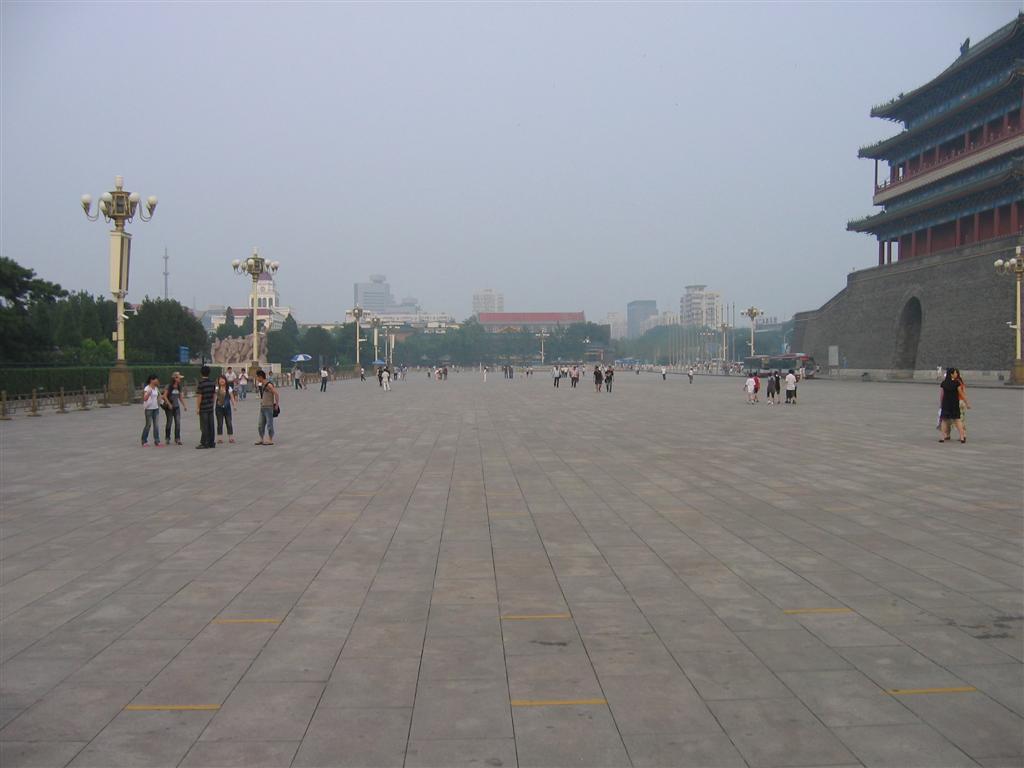



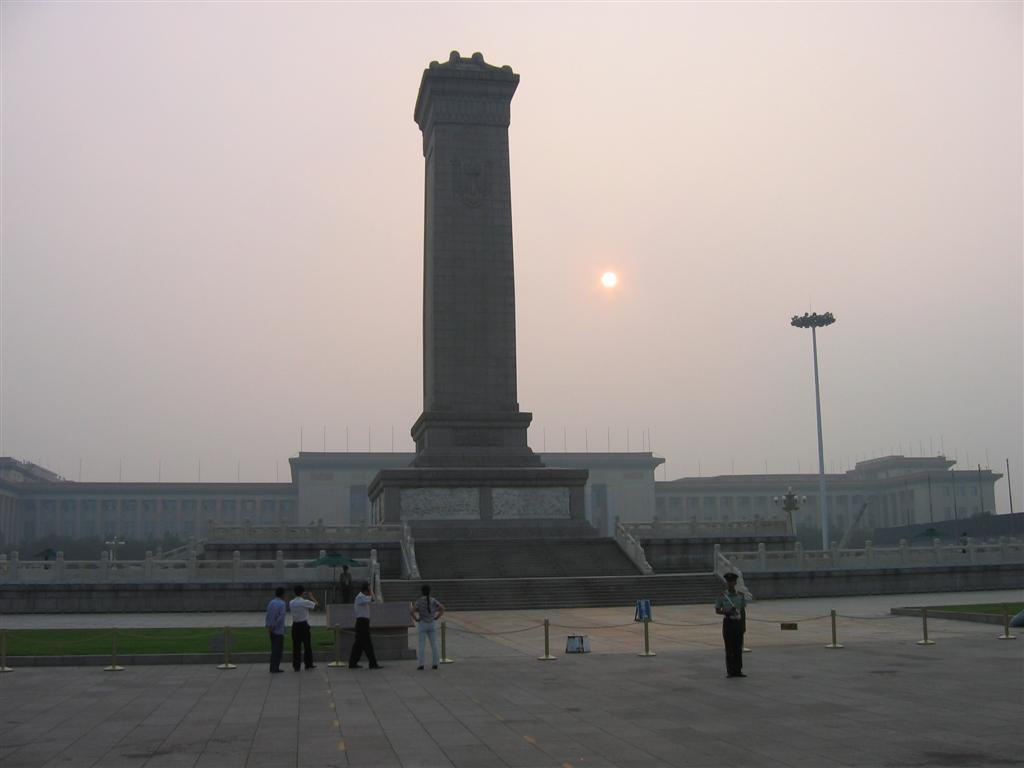
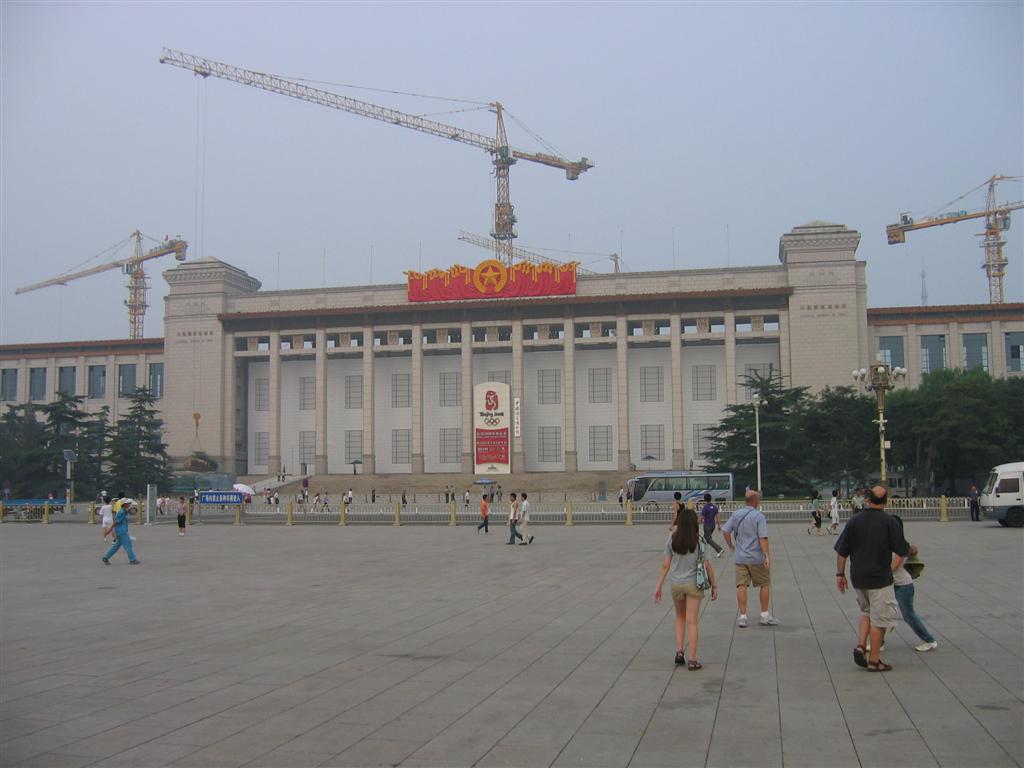
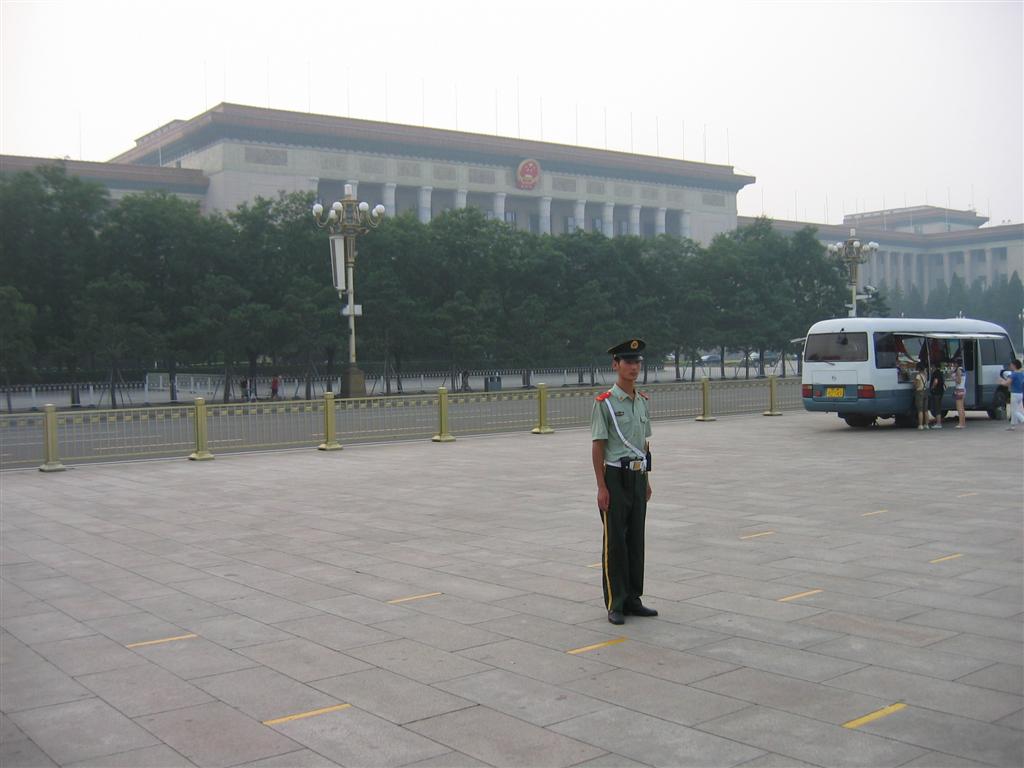
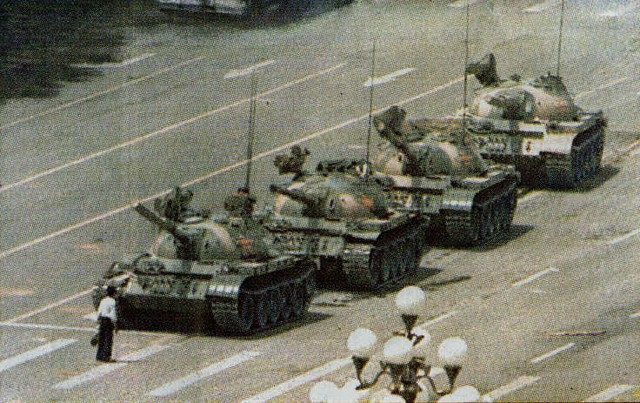





1 comment:
Tiananmen Square is so stark and not very inviting...I can't imagine having a picnic there!
Monument to the People's Heroes looks similar to some of the Civil War monuments around here but WAY taller!
That picture is what I see when I hear Tiananmen Square.
Thanks to your friend Jeff for the pictures and to you for all the great information!
Alicia =0)
Post a Comment